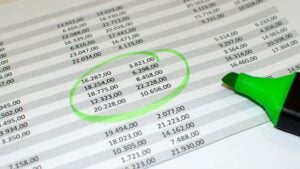Bookkeeping with Excel?
Although it may sound a little strange, bookkeeping doesn't always have to be difficult and expensive.
There are ways to keep your books in a simple and inexpensive way... Excel! Learn more below and call us on 1300 2BOOKS for further assistance with all your bookkeeping needs.
What is Excel?
Excel is a common computer program that is often found as standard equipment on many computer systems.
What does Excel do?
Excel allows individuals to set up spreadsheets in any way necessary to track the day to day operations of a business.
Steps for using Excel
Excel comes equipped with many unique features and we have set out some of them, and how to use them, below.
Download Bank Statements
Excel allows you to download bank statements right into the program. This should be the first step to using Excel for bookkeeping, and can save you a great amount of time.
Categories
Once you have downloaded bank statements, break down the spreadsheet a bit more into categories and start to move your transactions into the appropriate places. The more often you do this, the easier it will get, which will make basic record keeping a cinch.
Format a Spreadsheet
When you have done the basics, you can then start to format an Excel spreadsheet to make it a bit more efficient. Excel has many preset tools that can be utilised to allow for a certain number of decimal points, sizes of numbers, outlines and borders, headings, column sizes, colors, and even to incorporate graphics. These touches may be somewhat “cosmetic”, but they can help keep the information neat and tidy, making it easier to track.
Formulas
Perhaps the best feature of Excel is its ability to automatically insert and calculate formulas. These handy tools can be programmed into cells to automatically update, total entire columns, and figure “if this then that” scenarios. Preset formulas such as “AutoSum” quickly tally a selected number of cells, while simple mathematical symbols can be added in order to calculate basic information.
Report Creation
All of these unique features and formulas can be further utilised in order to examine selections of data, in order to create reports such as profit and loss statements, accounts receivable, and accounts payable.
Mistakes
Excel also eliminates the common frustrating issue of having to redo your books when a mistake is made. If you find you have made an error in entering a number somewhere along the line, you simply correct the mistake where it occurred and Excel carries the change forward throughout the entire workbook.
Anyone looking for a relatively simple and inexpensive way to begin tracking their business transactions should strongly consider looking into Excel. The straightforward design and layout of information makes examination and entry a snap, while the step by step guides available help you at every phase along the way, even when your business needs to expand. Give Books Onsite a call on 1300 2BOOKS today to find out more.



